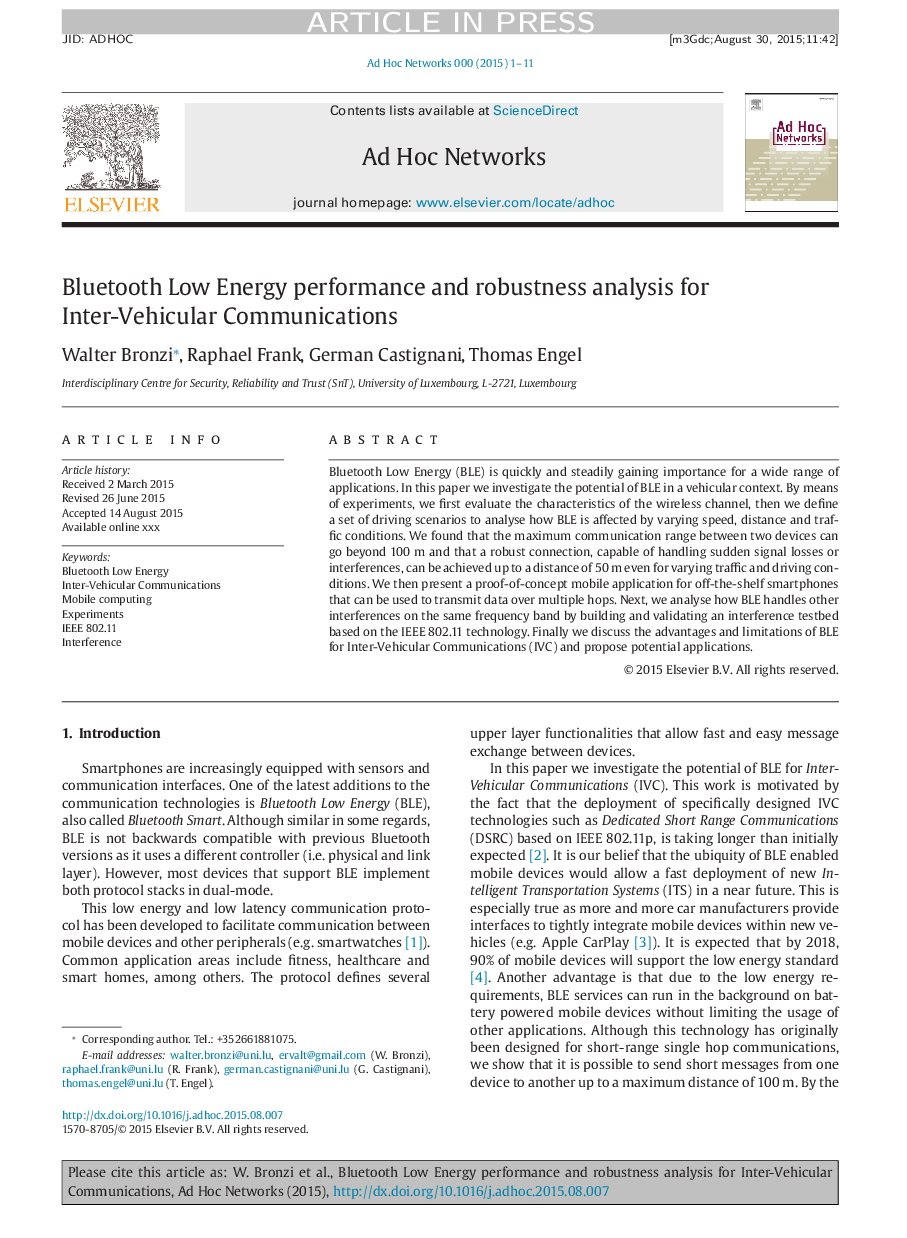| Article ID | Journal | Published Year | Pages | File Type |
|---|---|---|---|---|
| 10338006 | Ad Hoc Networks | 2016 | 11 Pages |
Abstract
Bluetooth Low Energy (BLE) is quickly and steadily gaining importance for a wide range of applications. In this paper we investigate the potential of BLE in a vehicular context. By means of experiments, we first evaluate the characteristics of the wireless channel, then we define a set of driving scenarios to analyse how BLE is affected by varying speed, distance and traffic conditions. We found that the maximum communication range between two devices can go beyond 100Â m and that a robust connection, capable of handling sudden signal losses or interferences, can be achieved up to a distance of 50Â m even for varying traffic and driving conditions. We then present a proof-of-concept mobile application for off-the-shelf smartphones that can be used to transmit data over multiple hops. Next, we analyse how BLE handles other interferences on the same frequency band by building and validating an interference testbed based on the IEEE 802.11 technology. Finally we discuss the advantages and limitations of BLE for Inter-Vehicular Communications (IVC) and propose potential applications.
Related Topics
Physical Sciences and Engineering
Computer Science
Computer Networks and Communications
Authors
Walter Bronzi, Raphael Frank, German Castignani, Thomas Engel,
